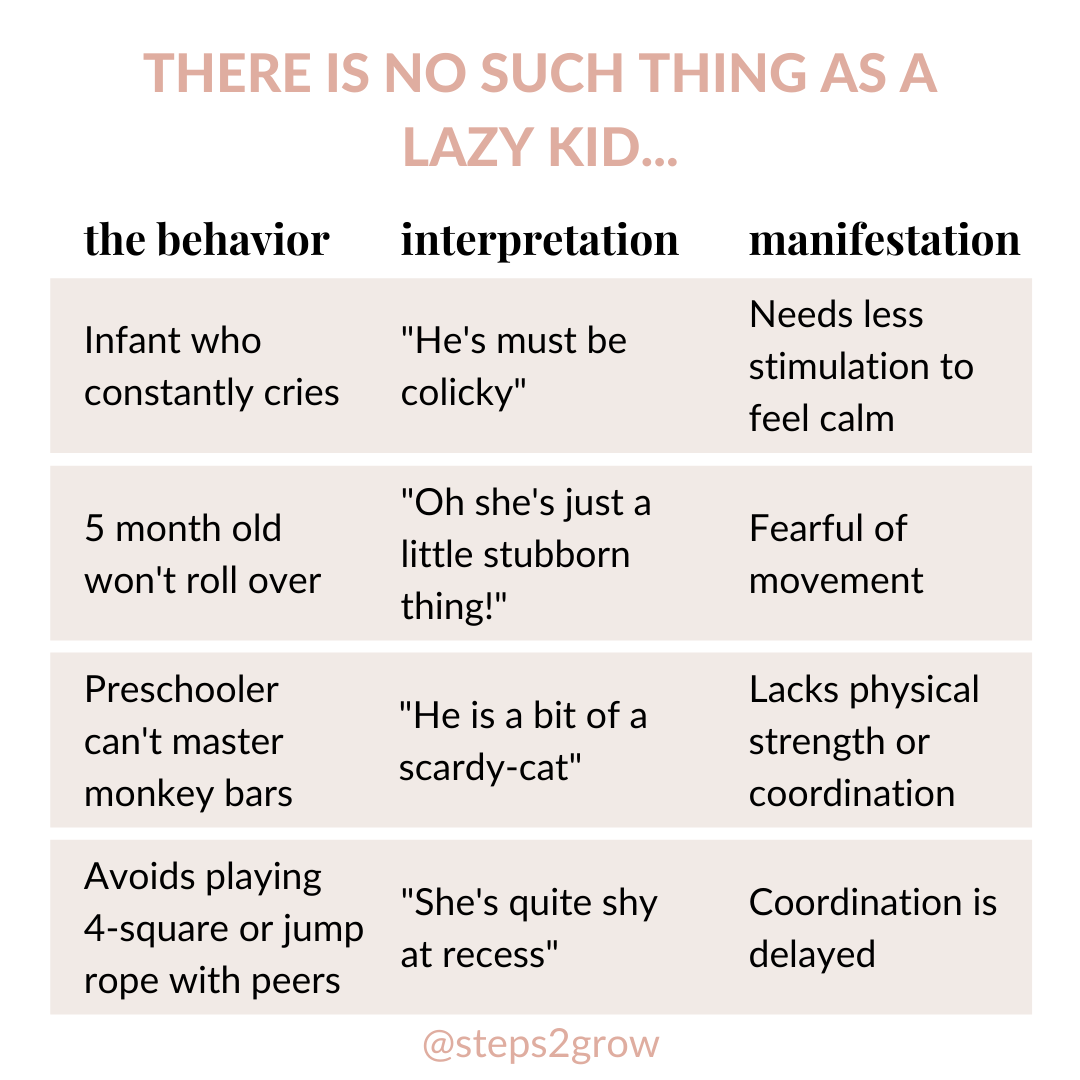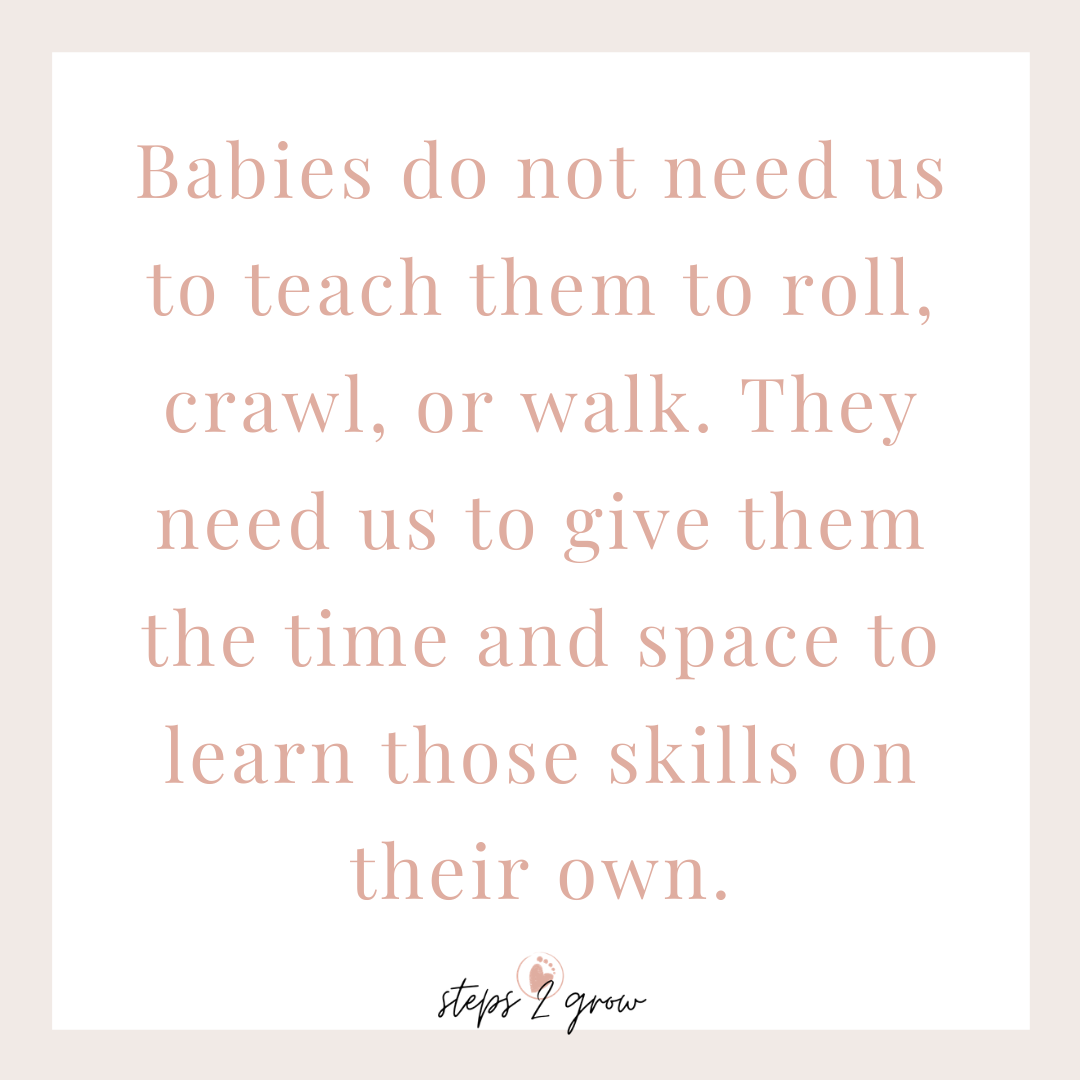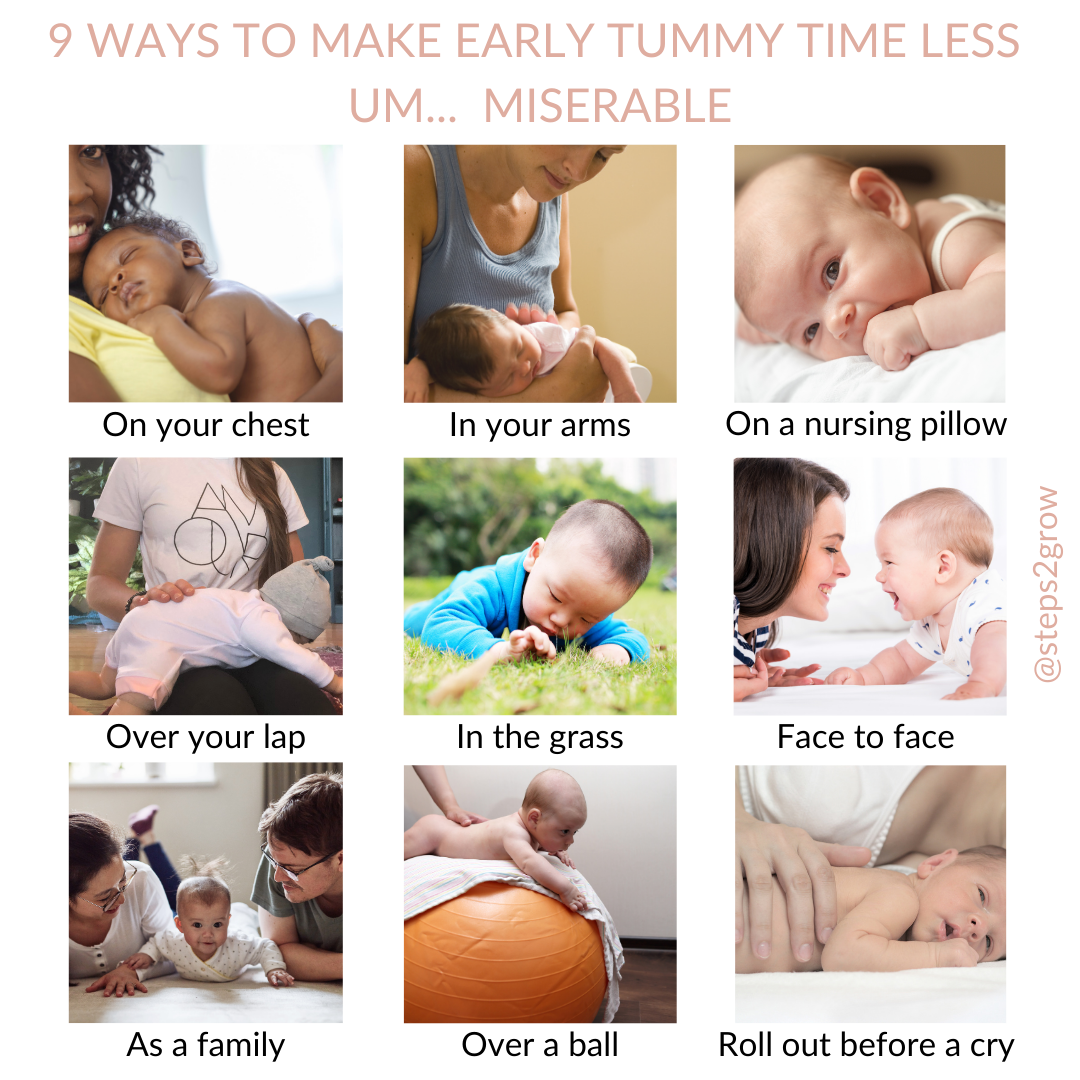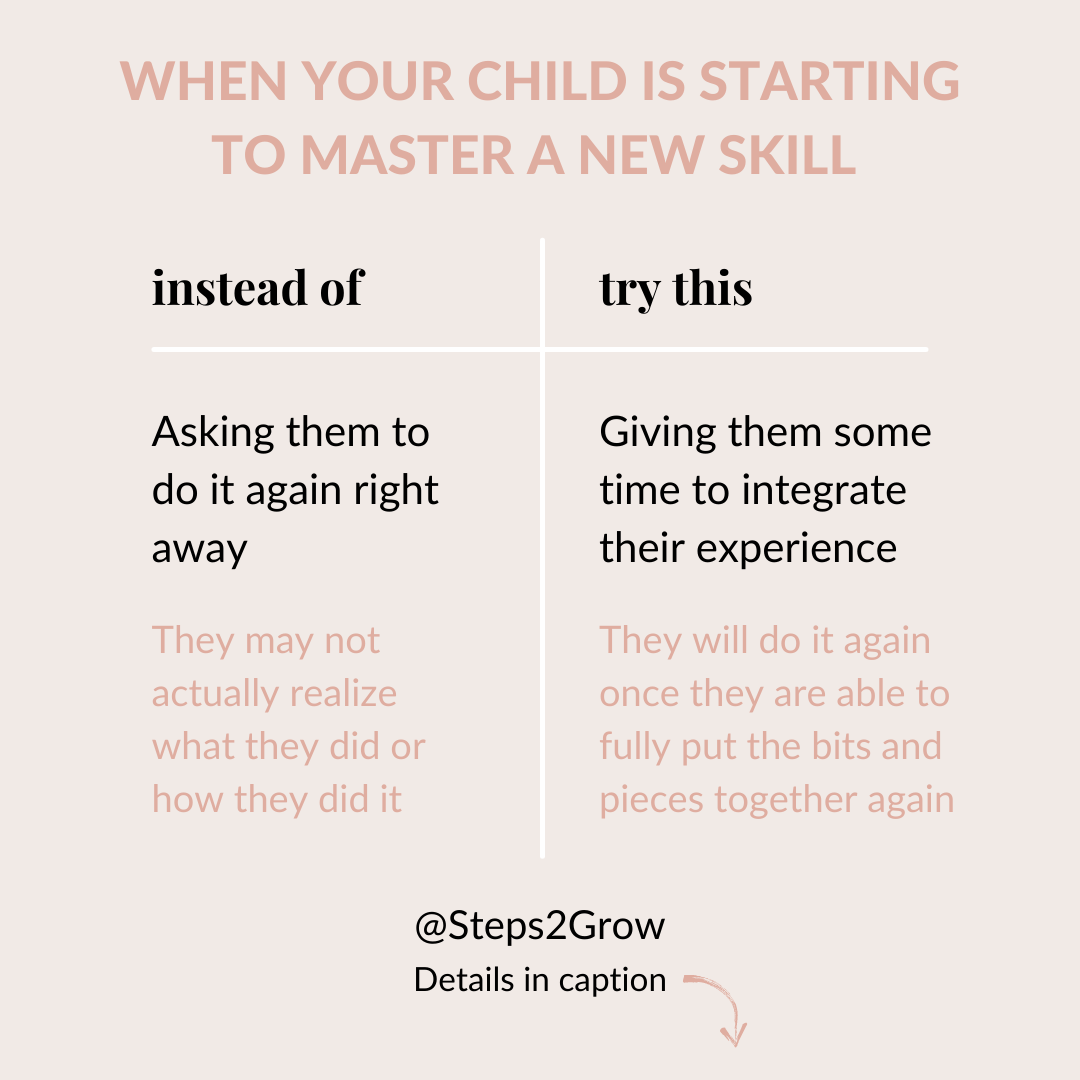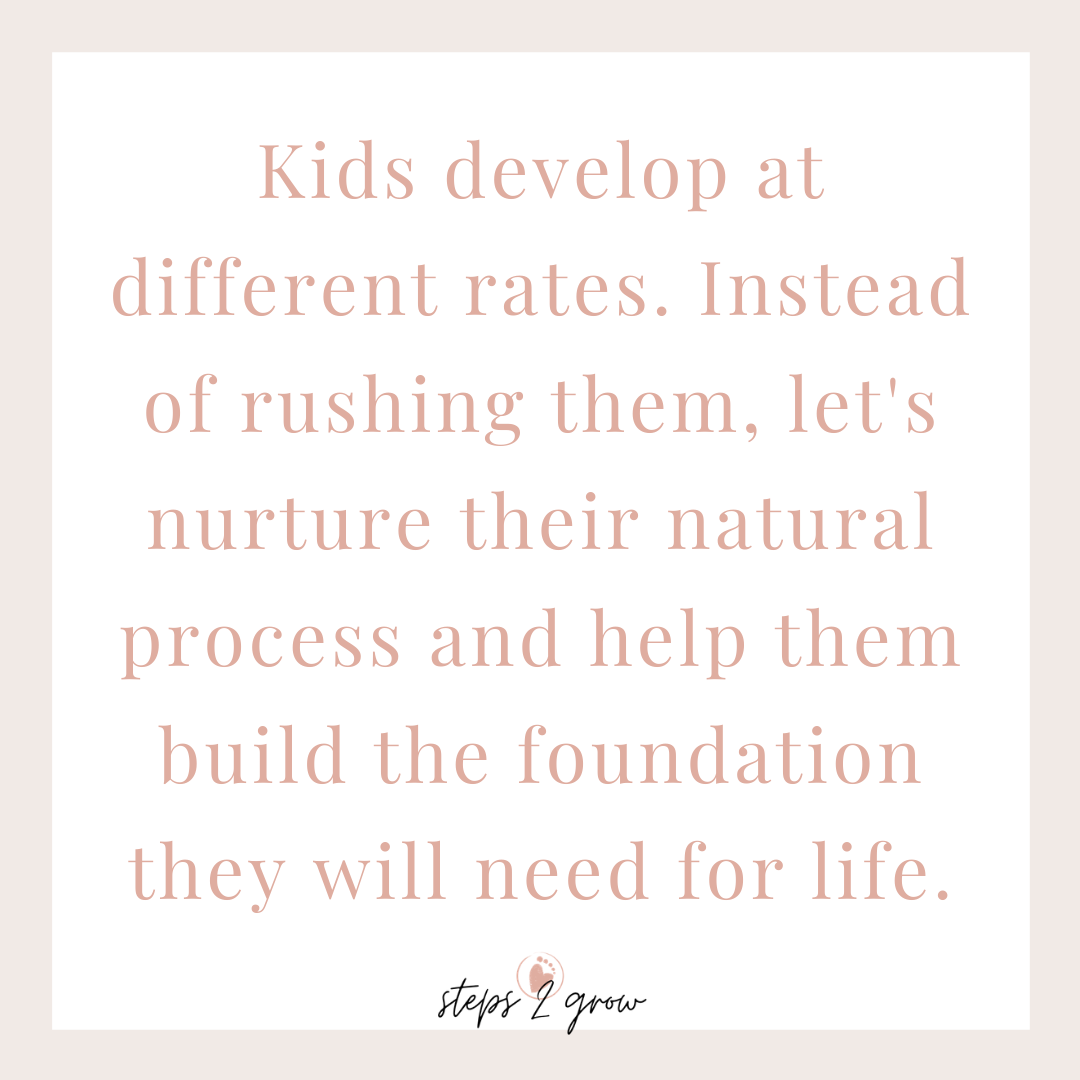You will hear many pediatric OT's and PT's say that "it begins with a blanket on the floor." And there are so many reasons why we say that. 1. Babies have body parts, and they want to move them! And all of those funny twitches, wiggles, and random movements collect and send a flow of important sensory information to the brain that helps map the body. 2. Exploring and experimenting with those jerky and abrupt random movements is what leads to controlled, functional, and intentional actions like stretching, twisting, rolling, creeping, sitting, crawling, standing, and walking. A child who is given lots of time on the floor to develop these skills will instinctively gain the muscle strength, flexibility, balance, body awareness, and coordination it takes to master new skills. 3. Movement integrates the senses, and your baby’s senses are their window into their new world. Through unrestricted active movement on the floor, your baby integrates so many senses at the same time: feeling carpet on her skin, the pressure of her back on the floor, seeing a toy, reaching or rolling to go get that toy, hearing mom’s voice nearby, turning her head and orienting to mom’s sound, then rolling toward mom. So not only is your baby learning about her body and how to use it and move it, but she is learning how to skillfully use those amazing senses in tandem with movement. 4. Spending time on the floor means spending less time in baby gear, which is hugely beneficial to development and preventing flat spots from forming on the skull. 5. Babies are naturally curious and intrinsically motivated learners. Floor time provides them the opportunity to be curious, explore, and move according to their own inherent abilities. It allows your baby to naturally practice and master the prerequisite skills needed for a life of upright movement. 6. We know that if a baby does not get opportunities for quality movement experiences early on, they may face developmental and lifelong learning challenges, and see a pediatric therapist like me. So, it is super important for your child to get lots of free play time on the floor. If you are reading this and realizing your baby doesn't spend much time on the floor. Don't beat yourself up! Guilt won't help your baby's development. But incorporating more floor time today WILL. Common Question: A cushion like the DockATot can still let's my baby move, right? Well, actually, use of baby gear like cushions restricts a lot of movement in the head and neck, limiting an infant's ability to move randomly and freely. The floor offers the most space and the most choice for self-directed learning. It is best to limit use of baby gear as much as possible. Here is how you can provide the best conditions for floor time: 1. Start with your baby lying on her back. In this position, your baby has space around her and in front of her to move and wiggle, and she can see much of the room. If she wants to change her position, she can when she is able to. 2. Choose a hard non-slip surface like carpet, a mat, or a blanket. This provides clear sensory input and does not restrict range of motion that a cushion or lounge seat would. 3. Play in the grass! Have wiggle time outside in the fresh air, so your baby can explore and experience all the sensory input from the world outside. 4. Keep in mind what clothing your child is wearing Comfortable outfits that allow for movement and flexibility are most helpful during play time. 5. Create plenty of wiggle-friendly rooms and “yes” spaces in your house or outside Childproof as necessary. That way you can sit back and let your little one move and explore freely as she grows and becomes more mobile, without worrying or having to discourage her curiosity in any way. 6. Try not to interfere or "teach" anything. Allow your infant to learn to move and do things independently, through patience and persistence. I recommend not propping your baby up or placing her in a position she cannot get into herself. Trusting your infant to do what she is ready to do will boost her confidence and independence tenfold. 7. Opt for simple uncomplicated toys Battery operated toys tend to be overstimulating. Choose toys that offer a variety of contrasting colors, textures, weights, sizes, and sounds. Place them close to your child on the floor and allow your child to decide what to do with them and how to get to them. 8. Provide a calming and nurturing atmosphere Place baby on the floor gently, and remain calm in how you interact and play with your child. Let them experiment and make mistakes without intervening right away (unless it is a safety hazard!). 9. Tune into your baby's cues and respect them. Signs that your baby is ready for floor time include being animated, vocal, active, smiling, curious. Signs it may be time for a break include your baby turning her head away and averting eyes, rubbing eyes, getting fussy, etc. 10. The best time for movement and play is typically after a nap and a meal. But, be mindful of the potential for reflux after meals. If you think your baby may experience this, wait for 10-15 minutes before placing her on her back on the floor. Here is the bottom line.
Until next time.. happy floor time, and air hugs! You may also like:
1 Comment
6/24/2022 01:41:31 am
I agreed when you stated that the time that a child spends on the floor allows them to develop skills necessary for them to walk over time. My sister had her newborn just months ago. This got me thinking to gift her personalized baby blankets so her child can safely explore on the floor.
Reply
Your comment will be posted after it is approved.
Leave a Reply. |
AuthorHi! Austen here. Pediatric OT obsessed with leggings and all things child development. Welcome to my journal! I hope to educate and empower parents and caregivers with science inspired insights, effective strategies, and confidence. Categories
All
|


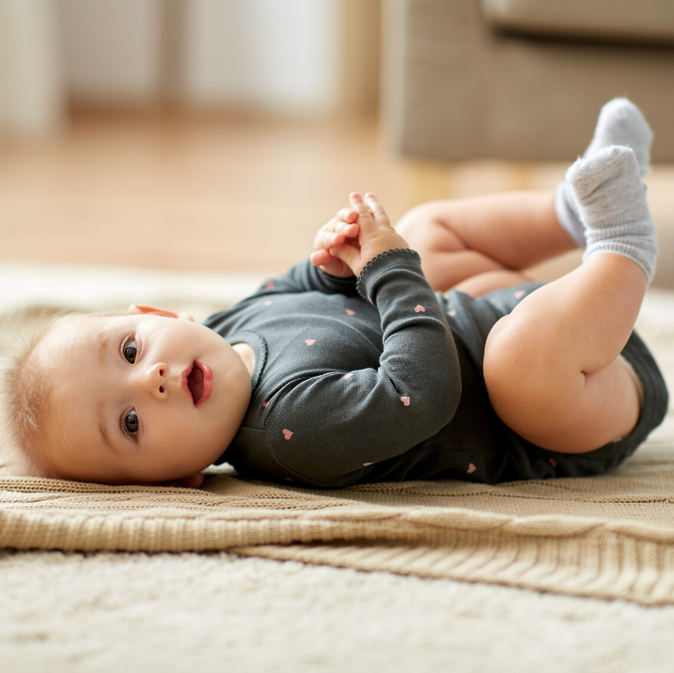
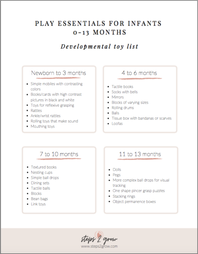


 RSS Feed
RSS Feed


